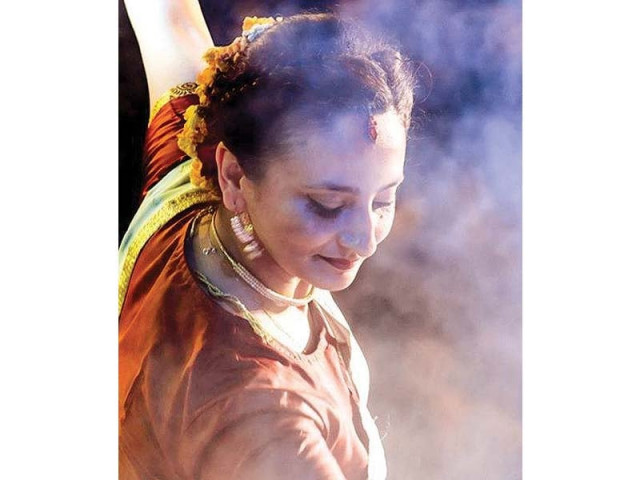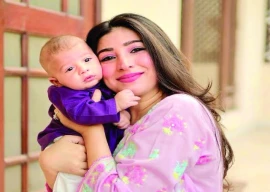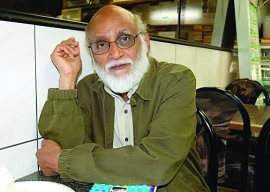
It was a chance meeting with renowned classical dancer Indu Mitha, which led Feriyal Amal Aslam to become her student, following her passion for the art form. It became a transformation for Aslam, who was then studying Anthropology at Quaid-e-Azam University. She still remains, first and foremost, an anthropologist, who became a student of dance, then a dance history scholar, and now, a dance practitioner as well. She performed at the opening ceremony of the Islamabad Literature Festival (ILF) this year.
The performance employs the classical dance language of the Nathyashastra, the oldest treaty on dance, along with some katha kali movements, an innovation within the repertoire by the dance pioneer Rukmuni Devi in Adar Kalakshetra style, which brought the dance form out of the temple context in the 1930s.
“My dance has honed my initial training as a socio-cultural anthropologist and later, as an exchange student and cultural ambassador,” says Aslam. “If we follow our heart, focus on the positive, and on commonalities between cultures, we can reach out across borders and touch people’s souls. And that is how we can change people’s narrow views about things that are different for them,” she adds.
Discussing what it is about classical music and dance that resonates with her, she shares, “I like the disciplining of the body and how classical dance is a language to narrate a story through gestures originating thousands of years ago, and repeated over time and space.” The dancer further explains, “It becomes a tool for me to travel through time, which facilitates my thinking and feeds my work as a scholar.”
Aslam states that, on a personal level, her journey with the art form is a spiritual one. “It is not only a creative means of expression that is most fulfilling for me, but it has also kept me grounded as an anthropologist in my search for answers to complex question of Pakistan’s culture and identity in the aftermath of the 1947 Partition,” she says. “When I dance, I can put into action my vision to choreograph peace through the arts, especially the performing arts.”
The journey with her art form has taken her on a Fulbright to the University of Hawaii at Manoa. This was where she became affiliated with the East West Centre (EWC) and met her husband, who was an Indonesian PhD fellow at the EWC. At EWC, began her first formal training in cultural diplomacy through the arts, which blossomed during her PhD in Culture and Performance at the Department of World Arts and Cultures at the University of California, Los Angeles.
Although seemingly disconnected, her distinct roles as an anthropologist, a teacher and a dancer come together in eclectic harmony. By day, Aslam is a government official. She spearheads the department of development studies at the Pakistan Institute of Development Economics and teaches gender development. She attends evening dance classes under the tutelage of Mitha, who she fondly refers to as Indu jee.

Dance allows Aslam to engage with a theme, using her body as a thinking tool. “The classical dance gives a dancer the language to narrate stories... the strict disciplining of the body allows a good classical dancer to transcend the body,” she explains. “So, the body becomes a vessel for the story to be conveyed. The attention, thus, is the story that the dancer is part of,” she concludes.
Published in The Express Tribune, April 26th, 2015.
Like Life & Style on Facebook, follow @ETLifeandStyle on Twitter for the latest in fashion, gossip and entertainment.


















COMMENTS
Comments are moderated and generally will be posted if they are on-topic and not abusive.
For more information, please see our Comments FAQ